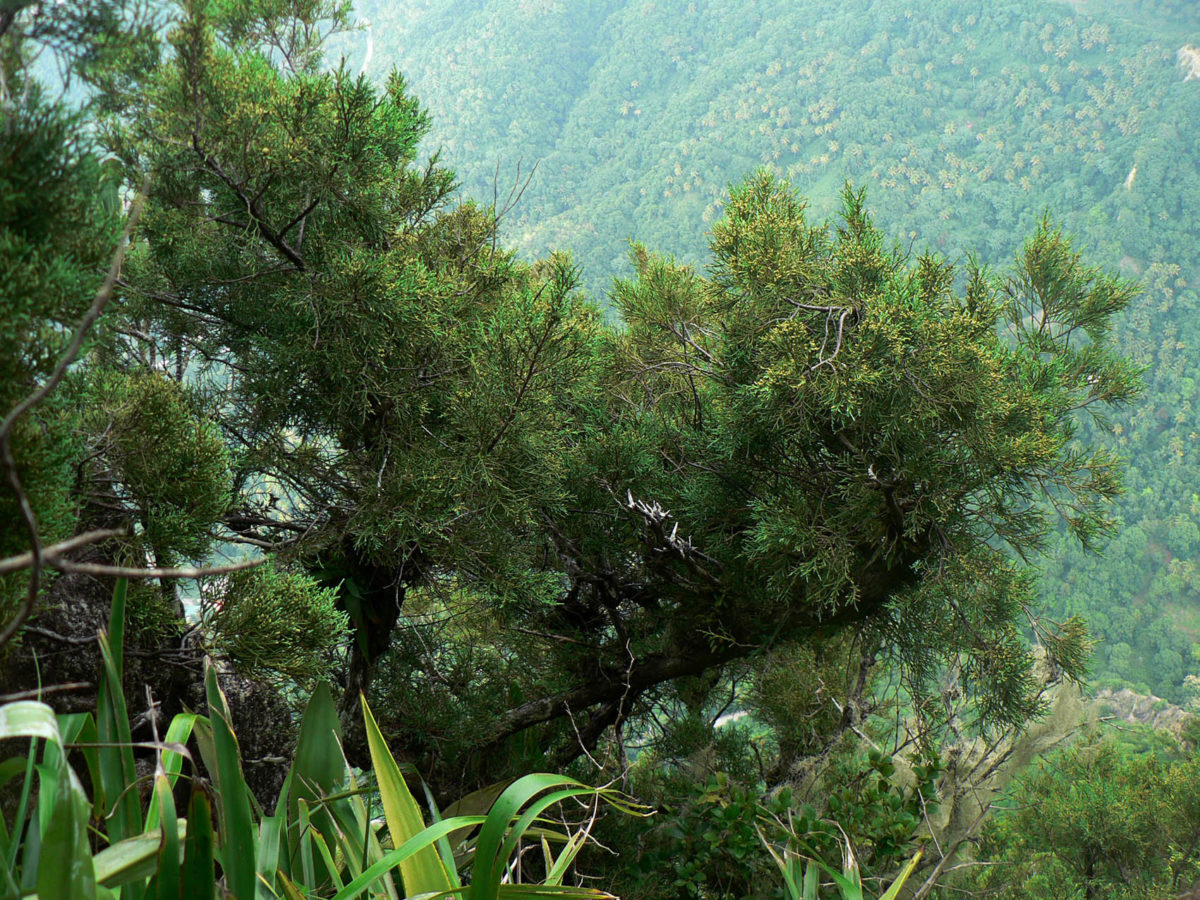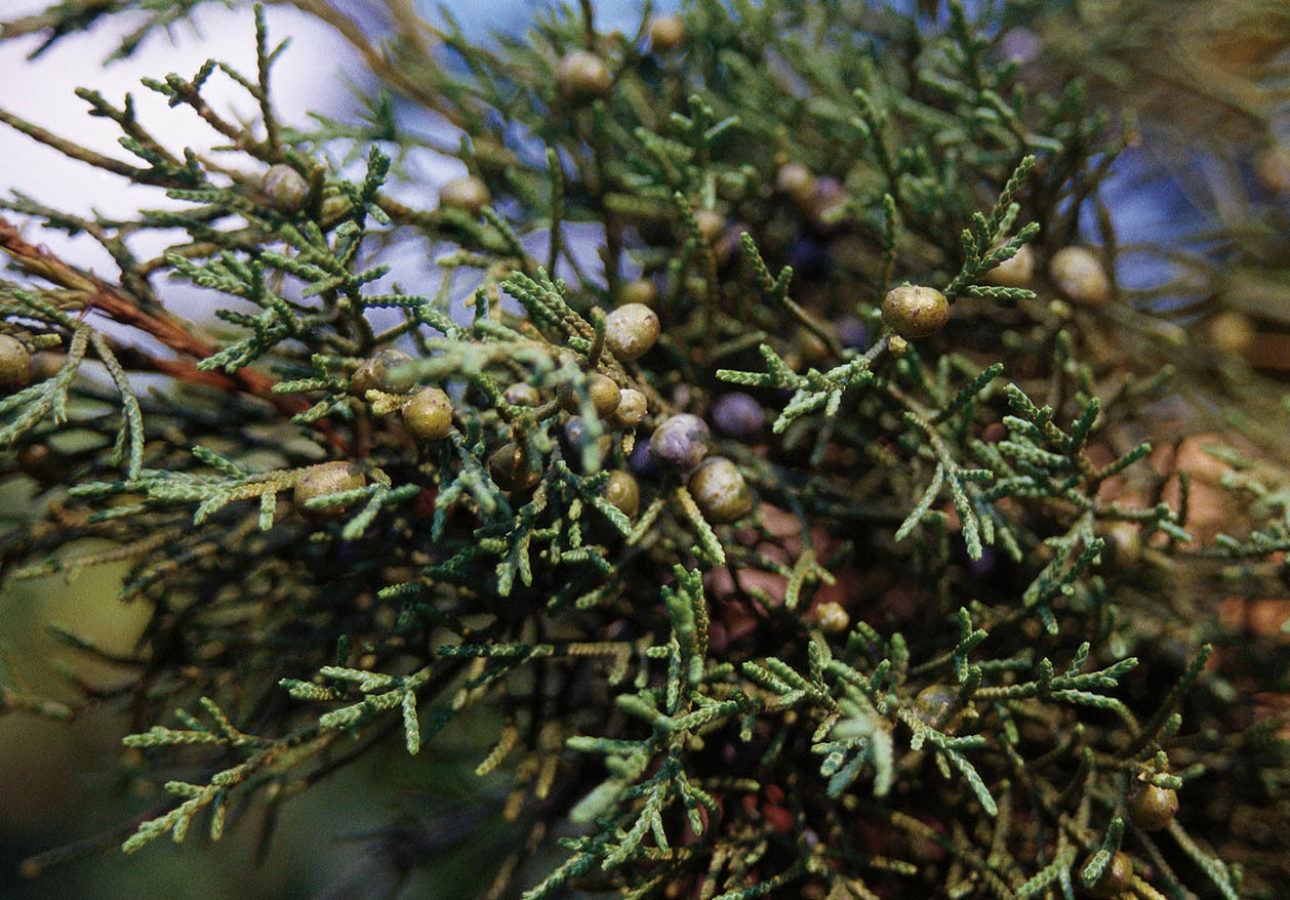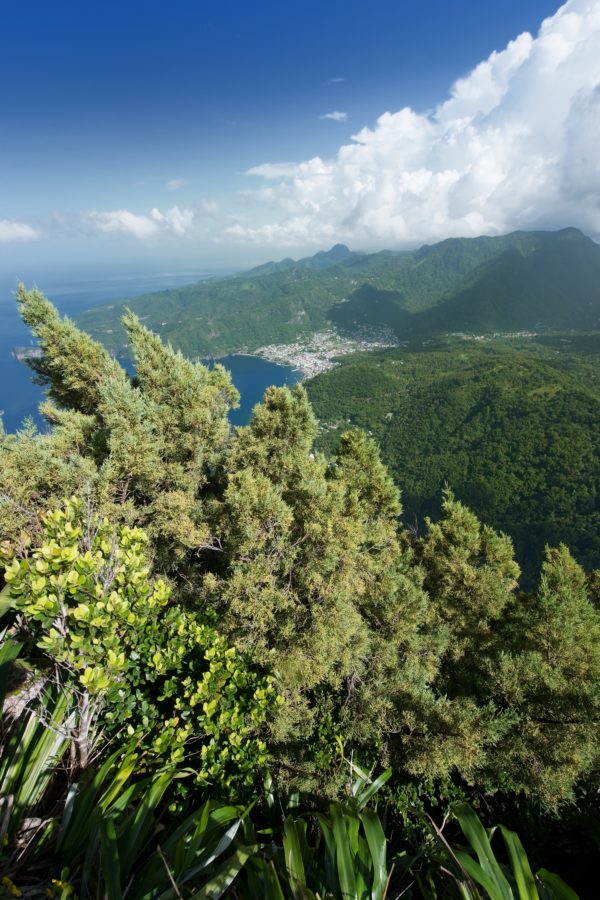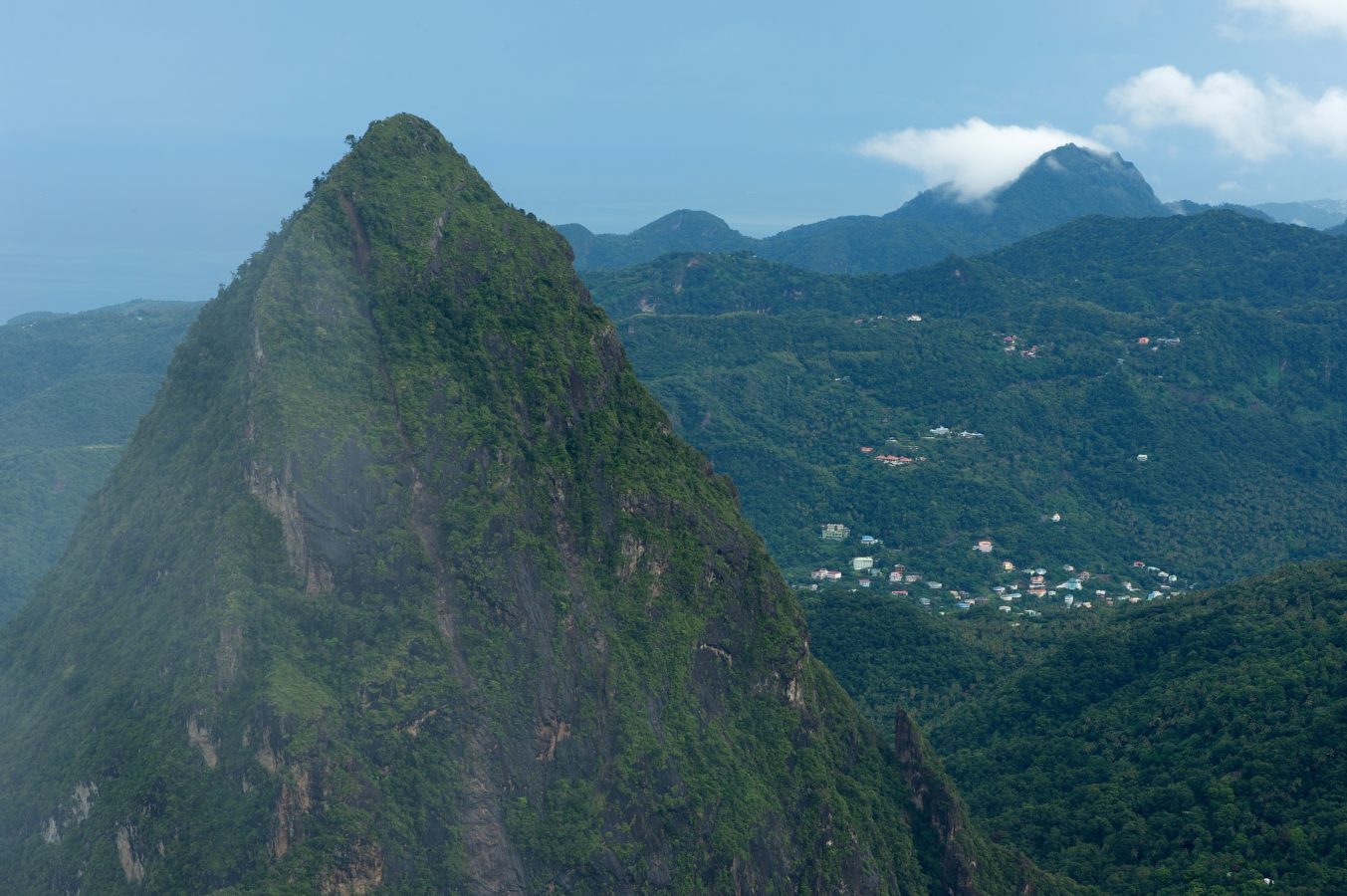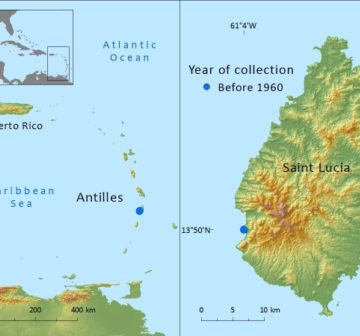Cupressaceae
Juniperus barbadensis var. barbadensis
Endemic to one mountain in St Lucia where only about 50 mature individuals survive and are threatened by wild-fires
References and further reading
- Adams, R.P. (1989). Biogeography and evolution of the junipers of the West Indes. In: C.A.Woods (ed.), Biogeography of the West Indes, pp. 167-190. Sand Hill Crane Press, Gainsville, Florida
- Adams, R.P. (1995). Revisionary study of Caribbean species of Juniperus (Cupressaceae). Phytologia 78(2): 134-150.
- Adams, R.P. (2011). Junipers of the World: The genus Juniperus. Trafford Publishing Co., Bloomington, Indiana.
- Adams, R.P., Jarvis, C.E., Slane, V. and Zanoni, T.A. (1987). Typification of Juniperus barbadensis L. and J. bermudiana L. and rediscovery of J. babadensis from St Lucia, BWI (Cupressaceae). Taxon 36: 441-445.
- Gardner, M., Smith, M. & Graveson, R. (2013). Juniperus barbadensis var. barbadensis. In: IUCN 2013. IUCN Red List of Threatened Species. Version 2013.1. <www.iucnredlist.org>. Downloaded on 06 July 2013.
- Graveson, R. (2009). The Classification of the Vegetation of Saint Lucia. Technical Report No. 3 to the National Forest Demarcation and Bio-Physical Resource Inventory Project. FCG International Ltd, Helsinki, Finland.
- Morton, M.N. (2009). Management of Critical Species on Saint Lucia: Species Profiles and Management Recommendations. Technical Report No. 13 to the National Forest Demarcation and Bio-Physical Resource Inventory Project. FCG International Ltd, Helsinki, Finland.
- Zanoni, T.A. (1999) Regional Action Plan: Caribbean Conifers: current status. In: Farjon, A. and Page, C.N. (Editors), Conifers. Status Survey and Conservation Action Plan. IUCN/SSC Conifer Specialist Group. IUCN, Gland, Switzerland and Cambridge, UK. ix + 121 pp.
